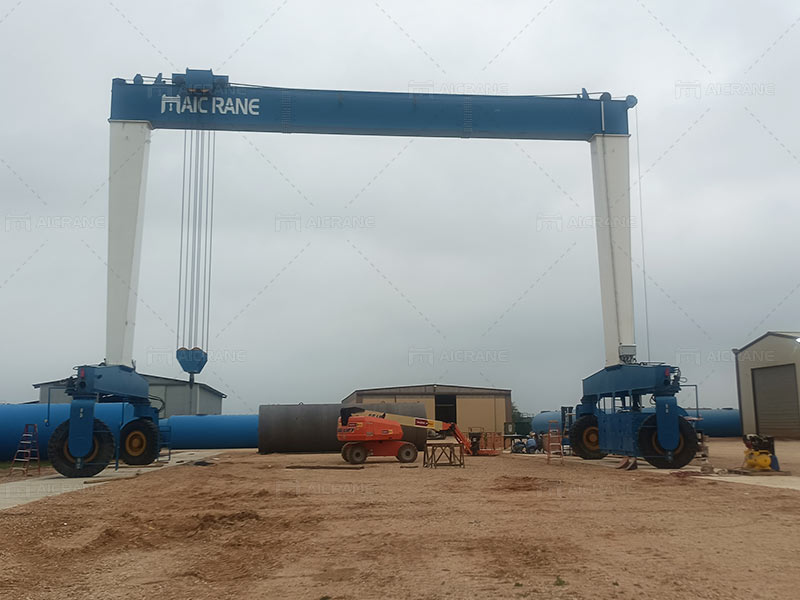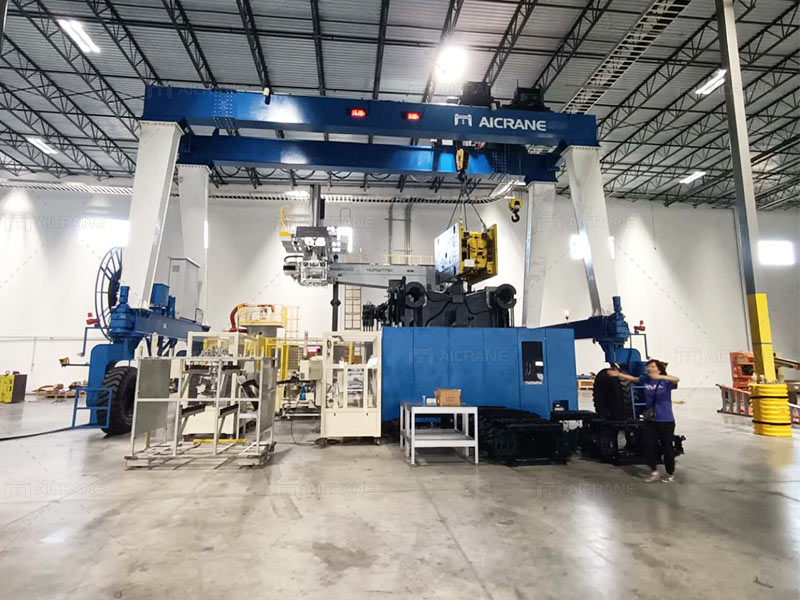Rubber tired gantry cranes (RTG cranes) are widely used in various industries for material handling due to their mobility, versatility, and capacity to handle heavy loads in confined spaces. Designed with rubber tires for enhanced mobility, these cranes are commonly seen in ports, container terminals, and manufacturing plants where they manage a range of cargo and materials. In this article, we will explore the different types of loads rubber tired gantry cranes handle, emphasizing their unique versatility across industries.

1. Containerized Cargo
Perhaps the most well-known application of rubber tired gantry cranes is in container terminals where they move shipping containers from ships, trucks, and trains to storage areas and vice versa. Containers come in standard sizes, typically 20-foot and 40-foot containers, and RTG cranes are perfectly suited for stacking and organizing them.
With the ability to handle containers weighing up to 40 or even 50 tons, gantry cranes efficiently stack containers into multiple layers, optimizing storage space in busy ports. The crane’s high lifting capacity and maneuverability help streamline logistics, reduce container handling time, and enhance overall port efficiency.
Types of Containers Handled:
- Dry containers: Used for general cargo.
- Refrigerated containers: For perishable goods that need temperature control.
- Flat rack containers: Ideal for oversized cargo such as machinery.
- Open-top containers: Suitable for bulky items like construction materials.
2. Steel Coils
In steel mills and production plants, RTG cranes are used to lift and transport steel coils. These coils, typically weighing between 10 to 50 tons, require careful handling due to their shape and weight. RTG cranes offer the perfect solution for moving these loads across the production line or transporting them for storage.
Steel coils present challenges in terms of load balance and lifting safety, but the flexibility and high weight capacity of RTG cranes allow operators to position them with precision. Moreover, the mobility of these cranes enables them to transport steel coils between different parts of the production facility without the need for permanent rail tracks.

3. Precast Concrete Components
Construction sites, especially those that use prefabricated materials, often rely on RTG cranes to handle precast concrete components such as beams, slabs, and columns. These concrete elements can weigh tens of tons, making them ideal candidates for handling by RTG cranes.
In addition to handling large and heavy components, RTG cranes are often equipped with specialized lifting devices like spreaders or slings that allow them to lift irregularly shaped loads. The cranes’ ability to navigate rough terrain makes them an ideal choice for construction sites, where materials need to be moved across varying distances.
Common Precast Concrete Loads:
- Concrete slabs: Used for building floors or walls.
- Bridge girders: For bridge construction.
- Concrete columns: Used in industrial and residential buildings.
4. Wood Products
RTG cranes are also used in the lumber industry for moving large logs, timber, and other wood products. Given that some of these loads can be extremely heavy and irregularly shaped, RTG mobile gantry cranes are equipped to handle the task. Whether in lumber yards or at ports where wood products are being exported, these cranes provide an efficient solution for moving timber and logs.
Logs and other wood products require careful handling due to their dimensions and potential for imbalance. With their high flexibility and lifting capacity, RTG cranes are commonly used to stack and store wood products in areas where fixed gantry cranes might not have access.
5. Automobiles and Vehicles
The automotive industry often relies on RTG cranes to move vehicles, particularly in car shipping ports. RTG cranes can be used to load and unload vehicles from transport ships or move them around storage yards. In addition to cars, these cranes can also handle larger vehicles such as trucks and buses.
Automotive logistics benefit greatly from the mobility of RTG cranes, as they can quickly adjust to handle different types of vehicles with precision. Specialized lifting slings or attachments can be used to ensure that vehicles are transported without damage, making RTG cranes an essential part of automotive import and export processes.
6. Heavy Machinery and Equipment
Industrial sites and manufacturing facilities often require the handling of heavy machinery and equipment that are not containerized. Rubber tired gantry cranes are frequently employed to move oversized machines, industrial components, and large engines or generators. These loads may weigh anywhere from 20 to 100 tons, depending on the equipment.
One of the major advantages of using RTG cranes for handling machinery is their flexibility in terms of load movement. Since RTG cranes can travel across vast distances and easily maneuver in tight spaces, they are ideal for moving machinery within industrial facilities where fixed cranes might not be feasible.
Common Equipment Loads:
- Generators: Used in power plants or large industrial complexes.
- Transformers: For electrical installations.
- Industrial machinery: In manufacturing plants.
7. Bulk Cargo (Non-Containerized Goods)
RTG cranes are also used to handle bulk cargo, especially in industries that deal with loose materials such as gravel, coal, grain, and minerals. Although bulk cargo is typically moved using conveyor systems or other specialized equipment, RTG cranes can be fitted with buckets or grabs to lift bulk loads when necessary.
The handling of bulk materials requires careful consideration of weight and balance. With their ability to move freely over large areas, Aicrane gantry cranes provide an efficient solution for moving bulk cargo in storage yards or transferring it from trucks to ships.
8. Ship Parts and Marine Equipment
Shipbuilding yards and marine terminals often utilize RTG cranes for moving ship parts and marine equipment, such as boat engines, anchors, and propellers. These loads are heavy and irregularly shaped, requiring specialized lifting attachments and careful handling. RTG cranes can handle ship components weighing up to several hundred tons, depending on the crane’s capacity.
Due to the significant weight of marine equipment, RTG cranes must offer precision and stability during lifting. Their mobility also enables them to operate in different areas of the shipyard, making them indispensable for transporting heavy ship components during the assembly or repair processes.
Conclusion
Rubber tired gantry cranes have a broad range of applications across multiple industries due to their mobility, flexibility, and high load capacity. From handling standard shipping containers to moving oversized precast concrete components and heavy machinery, RTG cranes provide a reliable and efficient solution for lifting and transporting diverse types of loads. Their ability to operate in various environments and handle both containerized and non-containerized goods makes them an invaluable tool in logistics, construction, manufacturing, and beyond.
For businesses seeking to streamline their operations and maximize efficiency in material handling, RTG cranes offer a versatile and practical solution, capable of adapting to the specific needs of each industry and load type.